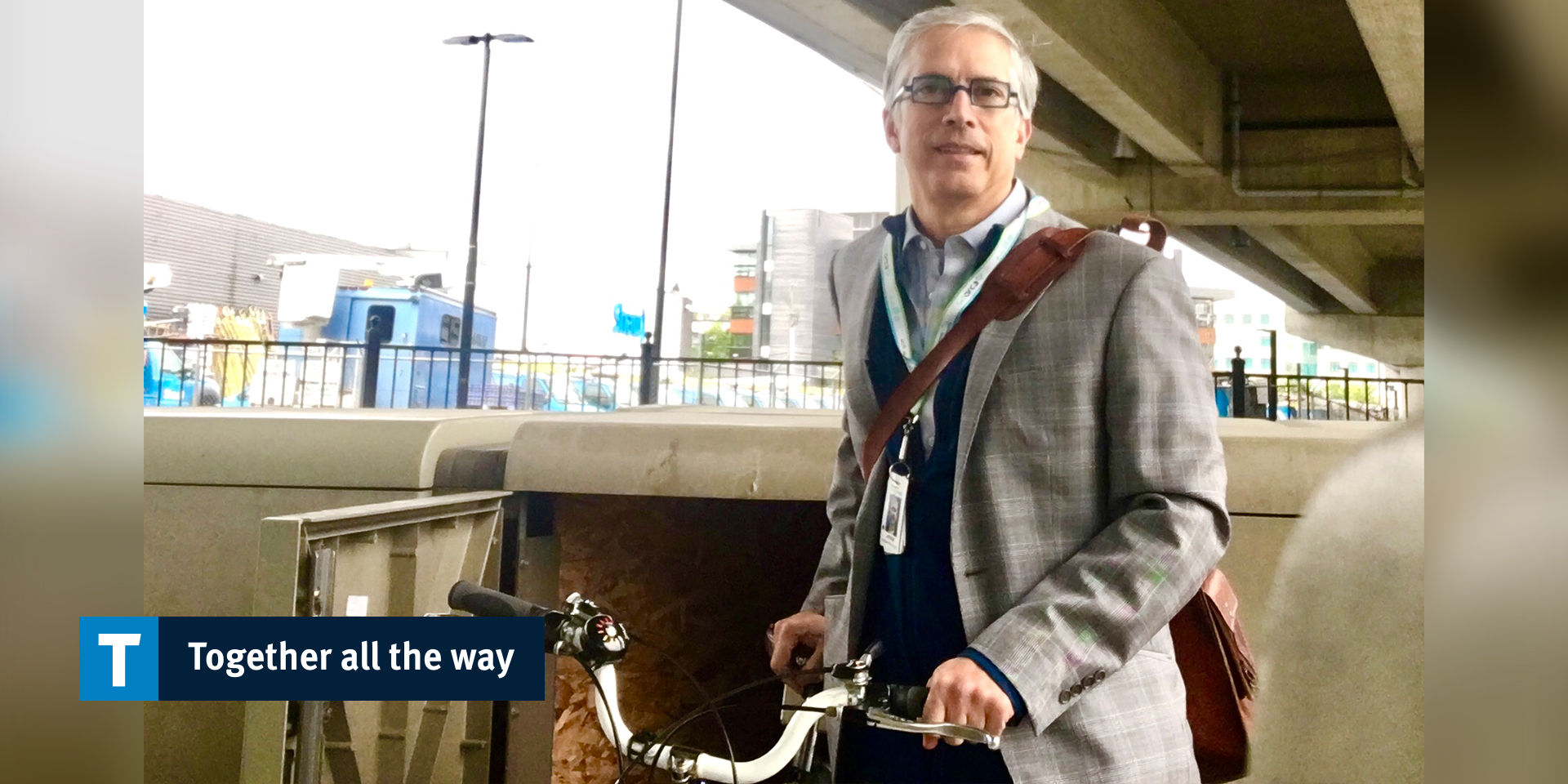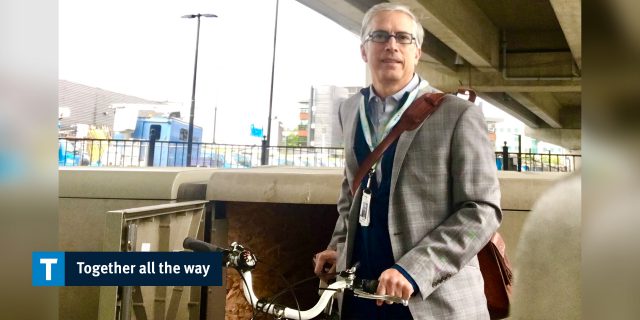Transit triathlon: a multi-modal commute from Langley to Vancouver
Transit triathlon: a multi-modal commute from Langley to Vancouver


As Metro Vancouver’s transportation authority, we’re here to support you whether you’re taking transit, walking, cycling or even driving.
When it comes to cycling, our program is vast and varied. It covers everything from the BC Parkway and Central Valley Greenway multi-use paths, cost-sharing with municipalities to fund improvements, to end-of-trip facilities like bike parkades and lockers. At our Bike Parkades, you can lock up your bike for $1 a day (fees capped at $8 a month) and connect with SkyTrain or bus to continue the rest of your journey.
Arthur Orsini is an essential worker. He’s also a multi-modal commuter — that means he uses more than one kind of transportation to get to where he needs to go. In his words, he does a daily “triathlon” to get from his home in Langley’s Walnut Grove to work in Vancouver’s Fairview neighbourhood.
That’s a very fun and interesting way to describe your commute! What do you mean by “triathlon?”
I take the 555 Port Mann Express bus to Lougheed Town Centre Station, then the SkyTrain to VCC–Clark Station where I pickup my bike from a locker that I rent $10 a month, and then I bike the last portion to work. Each segment is about 20 minutes.
Where are you headed to?
I work as a Healthy Transportation Lead at Vancouver Coastal Health. My role is to deliver projects, events and facilities that support our staff in more healthy, active and sustainable commuting.
Interesting stuff! We’re asking customers to only travel on transit if necessary and outside of peak hours, so space remains available for our essential service workers. What would it mean if you weren’t able to get to work?
My job is to help nurses, doctors and other hospital and clinic staff navigate the changes in their commuting options. The pandemic has brought on a lot of new stresses for health-care workers, so we are trying to make the commute safer and more comfortable. Although I usually try to steer our staff towards cycling, transit and carpooling; at present I’m working on parking solutions and finding vehicles for staff dealing with a lengthy or crowded commute.
TransLink’s losing more than $75 million a month, but we remain committed to providing transit services for essential workers. We are continuing to push for funding from senior levels of government. In your words, why is it important transit keeps running?
I rely on transit and I know that many of my colleagues do too. We depend on SkyTrains and buses to get us to work on time, and home again after a long work shift.
Now let’s talk about you. What’s one little known fact about yourself that most of your colleagues or acquaintances wouldn’t know?
I’ve never owned a car.
What are you looking forward to the most when the COVID-19 pandemic is over?
I’m not going to miss my role as the recipient of a long list of emails from staff describing parking tickets, frustrations and over-crowded parkades.
If you could offer words of hope, what would it be?
My bike ride is the best part of my commute, so I’d encourage more people to get on a bike …even if just for the duration of a coffee break. And, with Mobi bike share offering VCH staff free 90-day Essential Worker memberships, a bit of cycling is even easier.
One final question. I hear people wondering about this a lot, how does one cycle in Raincouver without getting wet?
Rain is really no barrier to cycling. I would rather just ride in my ‘ordinary clothes’ and find them insufficient about three or four times a year rather than fully outfit myself with typhoon gear. A rain jacket and gloves is usually enough for most cloudy/rainy days.
![]()
Public transit is an essential service, and we know +75 000 people are still reliant on transit, including frontline workers. Arthur’s story is another in our series about the people who are keeping our region operating during this unprecedented time. We at TransLink applaud all that frontline workers are doing, and we’re working hard to get them to their important work – Together all the way.
Do you have a story like Arthur’s or know someone doing good these days? If so, we’d love to hear from you via our social channels or email. Together we can get through the challenges that COVID-19 has brought. Telling stories of the effects on each other’s lives can help.





